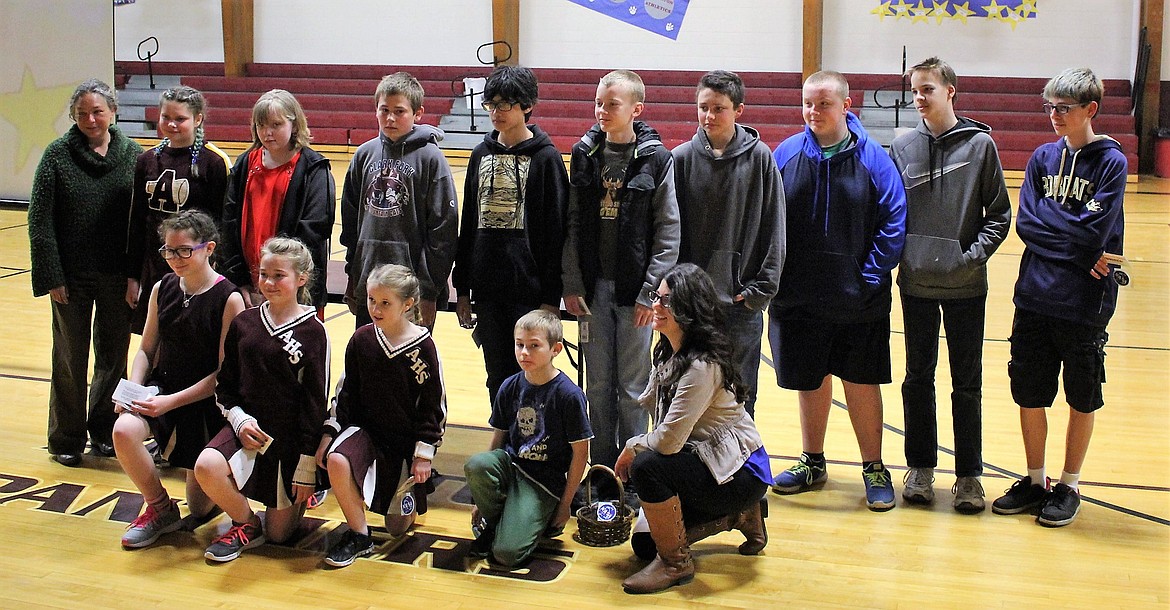Students learn that science is everywhere
Kathleen Woodford Mineral Independent | Hagadone News Network | UPDATED 8 years, 7 months AGO
Designing pressure suits and parachutes were just a few lessons learned for a group of Alberton students when they had an opportunity to work with NASA.
Nine Montana schools were selected to participate in NASA research projects, including the Alberton/Superior 21st Century Community Learning Center program.
Program Coordinator Jessica Maurer was instrumental in getting the project into the Superior and Alberton schools. Montana was one of 15 schools selected nationally to participate in the program. The other Montana schools were Frenchtown, Centerville, Bigfork ACES, Hot Springs, Boulder, Huntley, Rocky Boy, and Conrad. Hot Springs school teachers were also chosen for training in Virginia to work on a Global challenge.
Students worked on “Parachuting onto Mars”, which was to develop a drag device to slow a spacecraft for entry, descent, and landing on Mars. The other was “Why Pressure Suits?” and they developed a containment system to protect astronauts from the vacuum of space. Student worked with scientists from NASA to assist them with their projects which started in October, 2016 and ran for 12 weeks. Sande Adams, a science researcher and teacher, facilitated the Alberton project.
During an assembly in Alberton last week, the group showed two videos of their experiments. The pressure suits experiment showed the students using marshmallows in a pressure container. Using different materials, they constructed a way to protect the marshmallow from damage, much like an astronaut in space.
“It’s so fantastic that they have educators in these rural areas that they get this type of education and get to bring it back to smaller communities and that these student can see other careers besides a teacher, or a doctor,” said Mary Ellen Earnhardt, Educational Program Representative from Montana’s 21st Century Community Learning Centers in Helena. “It just opens up their (students) doors to the different things that they could do. I think it’s amazing and its teamwork. We can no longer work in our silos, we really need to work with our communities, and communities does not mean just Alberton. It’s the universities, the department of education, and NASA. It’s very important that we learn to reach out and work with communities and businesses so they can help our students.”
Earnhardt was at the Alberton assembly where participating students received special NASA badges. The following Friday, April 28, the group joined the other Montana schools in a presentation and awards program held at the University of Montana in the UC Center.
At the UM, they listened to speakers, including Raquel Redhouse, a NASA Mechanical Engineer and Navajo Native. They also received certificates and a photo of the International Space Station. Along with a tour of the campus and a demonstration of the OmniGlobe located in the Education building.
Mauer said the campus tour had an impact on the elementary students and about two-thirds said they wanted to attend college after they graduate.
“This was a challenging project for them,” she said. “They had to learn the process and draw out their ideas before doing the hands-on portion. They learned collaboration and teamwork.”
She said even putting the videos together was a learning process where they worked with GoPro cameras and a software program called Splice.
“They enjoyed it and I would definitely do it again,” Mauer said.
Adams is continuing to add STEM based learning into the Afterschool Program. In May she will be teaching a cooking section about gluten and how it affects the body.
“It’s great because they are finding that science is everywhere, not just in a science class,” Mauer said.
ARTICLES BY KATHLEEN WOODFORD MINERAL INDEPENDENT
Mineral County sends tax bill to Forest Service
The Forest Service will be receiving a property tax bill from Mineral County this year. County Commissioners Laurie Johnston, Roman Zylawy and Duane Simons signed the letter March 9 requesting property tax revenue for 2017. The “historic letter” as defined by Rep. Denley Loge, describes the plight Mineral County is facing as options to fund the county have dried up.
Colorado woman dies after vehicle gets stuck
An early evening call received by Mineral County dispatch on Friday, March 17, ended in tragedy. The body of Colorado resident Debra Ann Koziel was found in the Fish Creek area by a search team the following Tuesday afternoon. Her death was determined to be the result of exposure to weather.

No major flooding as snow thaws
“As the ground starts thawing, the rocks start falling,” was a post made on the Mineral County Sheriff’s Office’s Facebook page last week. A photo accompanied the post of a big rock which had come down on Mullan Road East near the Big Eddy fishing access in Superior on March 11. “Please be aware of your surroundings and pay attention while driving,” they warned in the post.



